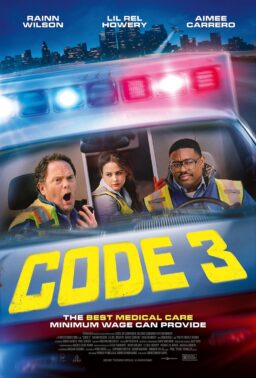Is the most famous short film in the history of the Internet–a movie its makers claim to have made at home in their spare time on a couple of consumer computers–not quite the low-rent achievement it seems?
Bruce Branit and Jeremy Hunt’s “405” shows an American Airlines jet making an emergency landing on an expressway behind a speeding SUV, whose driver speeds up while honking for a little old lady to steer her clunker out of the way.
The movie has been downloaded more than two million times from www.ifilm.com. It was the subject of an early report on Ebert & Roeper. The legend of its making was retold on Good Morning America and Today, in newspapers and Rolling Stone, and all over the web. It was a great story, about how these two guys cranked it out at home and are being courted by the Hollywood studios.
Is the story too good to be true? Yes, a smidgen. But it could be true, which is perhaps the point.
According to insiders, Branit and Hunt did not make the film entirely on a couple of $3000 home computers running Celeron chips, but also borrowed heavy-duty equipment at the effects shop where they worked, including a $1 million Henry machine, a high end video compositing system made by Quantel.
As they reaped national publicity, some colleagues nursed resentments. The breaking point, says one source, who asked not to be named, was when the filmmakers made their claims in magazines serving the post-production industry. “It hurts those of us who work very hard to create photoreal visual effects,” he said, “when clients come in and say, ‘Well, 405 was done so fast and with only a few computers–so how come you can’t do that, too’?”
This source told me “405” used not only the famous home computers but the Henry machine and lots of other hardware and software available to them at Digital Muse, the Santa Monica digital effects company where they worked at the time.
John Gross, then owner of Digital Muse, more or less supports that story.
“Some people in the industry were not too happy when Bruce and Jeremy marketed the film and it became so successful,” he told me. “As they appeared on more TV shows, it got to be a bigger and bigger deal, and it seemed like less and less computers were used.”
“They did use some Digital Muse equipment, and a Beta version of Lightwave software that we were testing. Their digital camera belonged to us. I knew these guys were doing this stuff. I ran the type of company where I didn’t mind them working on their own projects as long as they got their work done. And ‘405’ could have been done on a couple of computers at home. It would have looked pretty much as good, although it would have taken longer.”
Gross recalled the genesis of the idea: “The way I remember it, we got some storyboards for a commercial for Hyundais, where a plane lands on a car. Bruce started working on that, but our client lost the commercial. So, Bruce had that stuff, and came up with concept of the short film, thinking, hey, that would be cool.”
Asked about Gross’s comments, Branit said: “That’s all true. But all the editing, everything that was creative, 99 percent of it was done on computers at my house and Jeremy’s house. We did use the Henry machine to do some softening and grain-adding, after iFilm wanted to take the film online. But if we’d had a firewire connection and a digital video camera with timecode on it, we could have done that at home, too.”
His theory: “There are sour grapes going around. We worked at home, and on lunch breaks we’d show each other stuff. There may have been a sense that more was being done at our day jobs.”
On the web site they created for their film (www.405themovie.com) Branit and Hunt say: “A lot of the things we did on 405–the tools and techniques we used to do the effects, the sound, the editing–are on par with what big productions are doing…except we did it at home. It’s about the tools of filmmaking finally becoming affordable to anyone.”
Although it saves time if you can borrow a Henry.
My conclusion: They did most of it at home, could have done all of it at home, fudged a little, stirred up resentments among computer wizards who are fiercely competitive and proud of their work. But, boy, it’s a good little movie.











